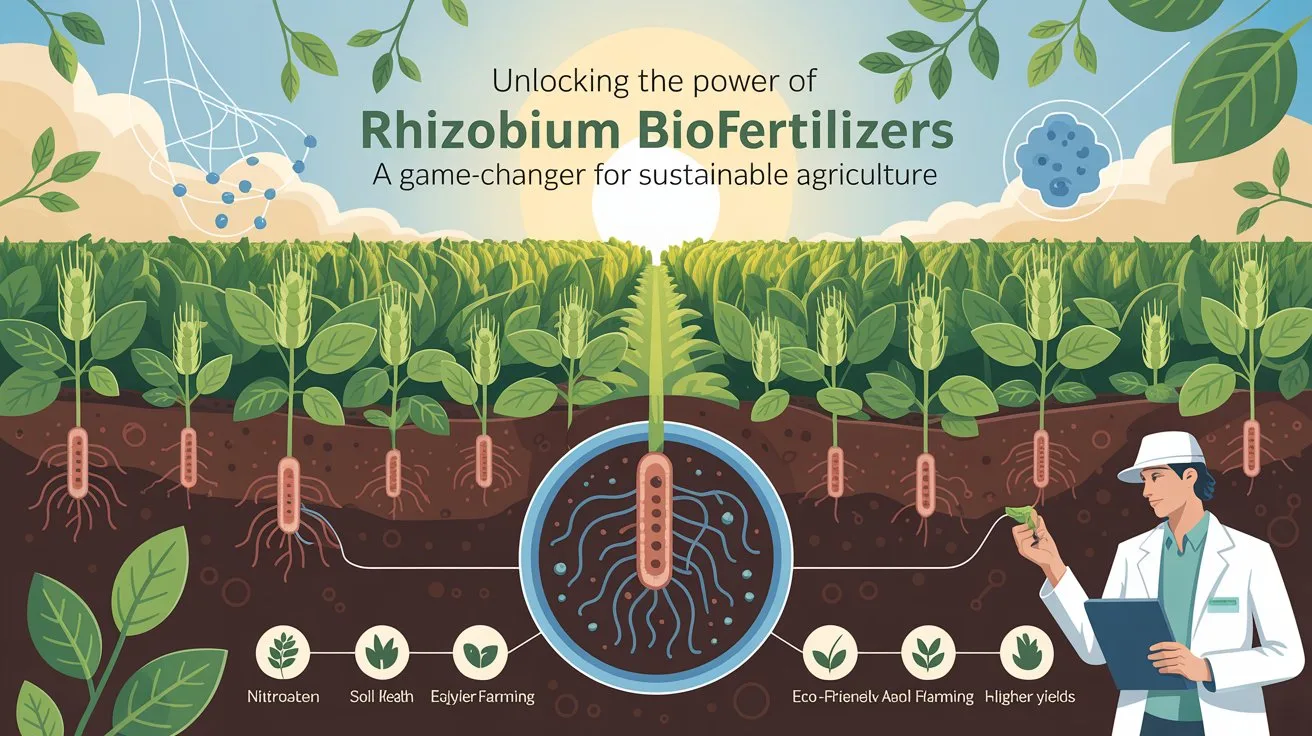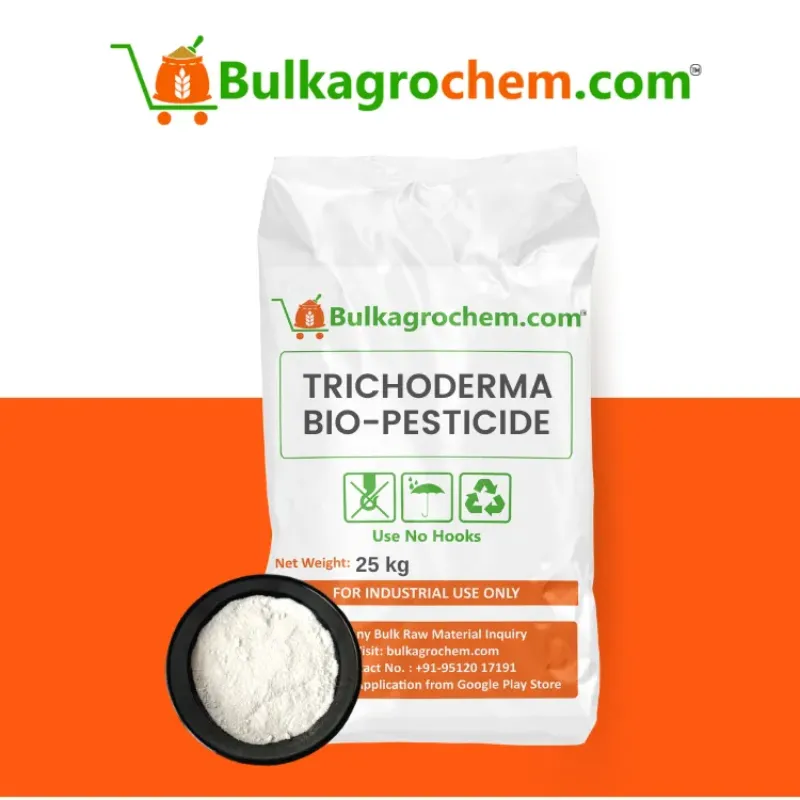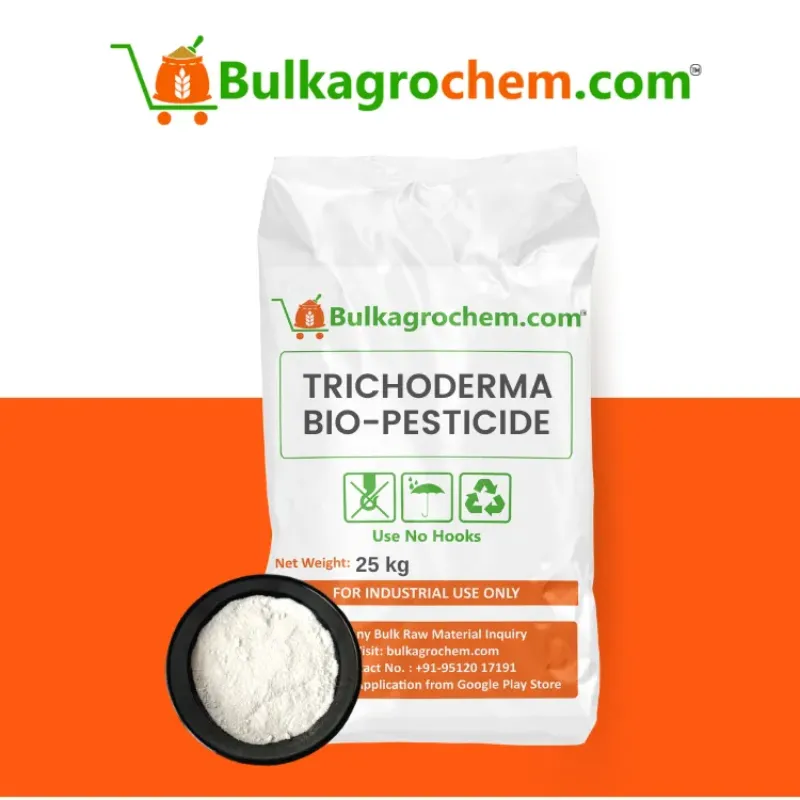Rhizobium biofertilizers represent a new approach to improving soil quality and providing sustainable alternative to increasing agricultural productivity. Rhizobium are nitrogen-fixing bacteria that develop a symbiotic relationship with many leguminous plants allowing these plants to fix atmospheric nitrogen into a form that can be used by the plant. The introduction of Rhizobium biofertilizers into agricultural practices can allow producers to cut down on their usage of synthetic nitrogen fertilizers. Reducing the amount of synthetic nitrogen fertilization lowers input costs for producers, as well as decreasing the amount of environmental pollution associated with synthetic nitrogen fertilizer runoff.
Beyond just nitrogen fixation, Rhizobium biofertilizers contribute to the general fertility of the soil and promote plant growth. Improved yield of crops can be expected by switching to their use, as they are most effective with nitrogen-demanding crops, such as peas, beans and lentils. Rhizobium are supplied as a liquid biofertilizer, which makes application to the field simpler, and enables quicker and more effective rapid colonizing of roots. By incorporating Rhizobium biofertilizers into their practices, agricultural producers will be contributing to a cleaner and greener future, by developing better soil health, while simultaneously increasing productivity.
Introduction: Why Rhizobium Biofertilizers Are the Future of Farming
Rhizobium biofertilizers are a primary source of sustainable farming that provides an environmentally friendly option for enhancing soil fertility and improving crop yield. Rhizobium biofertilizers contain Rhizobium bacteria, which colonize legumes, forming a symbiotic relationship, thereby fixing previous atmospheric nitrogen to a form which the plants can use.
- Reduction in Chemical Fertilizer Dependency: Using Rhizobium biofertilizers provides a natural source of nitrogen and reduces dependency on synthetic fertilizers which can be utilized to the detriment of the environment.
- Beneficial to Soil Health: The use of Rhizobium biofertilizers enhances the soil and restores soil structure; and can assist in beneficial microbial activity.
- Sustainable Farming: Rhizobium biofertilizers are part of sustainable farming practices which can promote reduced environmental degradation and assist in long-term agricultural productivity.
Understanding the Role of Rhizobium Bio Fertilizer in Sustainable Agriculture
Rhizobium biofertilizers provide an essential step for improved sustainable agriculture, as they are a suitable solution for the nitrogen requirement of leguminous plants. Biological nitrogen fixation is a natural process performed by Rhizobium, whereby they convert atmospheric nitrogen into a usable surrounding nitrogen form for plants to absorb, and may support the development of sustainable agriculture through requiring less environmental disturbance than synthetic fertilizers through accumulation of appropriate overall benefits:
- Natural Nitrogen Fixation: Rhizobium bacteria can fix nitrogen into the soil, in the right circumstances. They can decrease the need for synthetic fertilizer.
- Enhancing soil fertility: Rhizobium bacteria can address nutrient supply within the soil, and change other crops growing in rotation.
- Cost Savings: Rhizobium biofertilizers can create cost savings by removing the need to purchase chemical nitrogen fertilizer.
When farmers utilize Rhizobium biofertlizers, they are actively facilitating sustainable agriculture outcomes - decreasing reliance on chemical fertilizers, enhancing the quality of soils, and increasing the biodiversity of those productive landscapes.
The Environmental Benefits of Rhizobium Biofertilizers
The environmental benefits of Rhizobium biofertilizers include several aspects that cannot be provided by the use of traditional chemical fertilizers. The following benefits create healthy ecosystems:
- Less Nitrogen Runoff: Nitrogen is introduced into soils via Rhizobium biofertilizers to overcome the leaching process into water systems that can lead to the development of eutrophication and further water pollution.
- Less Greenhouse Gas Emission: Rhizobium biofertilizers unlike synthetic fertilizers do not produce nitrous oxide (a greenhouse gas) and release it into the atmosphere.
- Increased Microbial Diversity: The application of biofertilizers increases the microbial diversity of the soil which improves soil structure and the ability to hold moisture and nutrients.
These environmental benefits favor use of Rhizobium biofertilizers for agriculture while continuing to form an ecosystem to reduce agriculture's carbon footprint and preserve natural ecosystems.
Rhizobium Liquid Biofertilizer: A Convenient and Efficient Option for Farmers
Liquid formulations of Rhizobium biofertilizers provide a modern and effective means of applying Rhizobium bacteria to crops. Liquid biofertilizers have several benefits compared to traditional granular biofertilizers:
- Advanced Reaction Time: Liquid biofertilizers are absorbed faster by the plants, therefore, making nitrogen fixation happen faster and providing faster results.
- Ease of application: Liquid species of Rhizobium can be applied by seed coating, soil drenched, and/or through an irrigation system (drip, pivot) offering more flexibility.
- Consistency: Liquid formulations offered more consistent application when applying to a large field and evenly applying and distributing product leads to improved efficacy.
Farmers will be able to use Rhizobium liquid biofertilizers, deliver faster results, and maximize the productivity of their farming operations while reducing their production and environmental footprint.
The Science Behind Rhizobium Biofertilizers and Their Role in Nitrogen Fixation
Rhizobium biofertilizers are revolutionizing agriculture by offering a natural and sustainable method of fixing nitrogen in soils, particularly for leguminous crops. Nitrogen fixation is the process through which nitrogen gas from the atmosphere is converted into a form that plants can absorb and utilize. Rhizobium bacteria are crucial for this process, and their use as biofertilizers has been a breakthrough in sustainable farming practices.
- Nitrogen Fixation Process: Rhizobium bacteria, when introduced to the soil, form a symbiotic relationship with legume roots. The bacteria convert atmospheric nitrogen (N2) into ammonia (NH3), which is then available for plant use.
- Increased Soil Fertility: This process enhances soil fertility by supplying nitrogen, a vital nutrient for plant growth, especially in soils deficient in nitrogen.
- Sustainability: Using Rhizobium biofertilizers reduces the need for chemical nitrogen fertilizers, which are not only costly but also harmful to the environment.
Incorporating Rhizobium biofertilizers into farming systems promotes sustainable agriculture, reduces dependency on chemical fertilizers, and helps maintain healthy soils.
How Rhizobium Bio Fertilizer Fixes Nitrogen in Soil
Rhizobium biofertilizers play a vital role in fixing nitrogen in soil by establishing a beneficial symbiotic relationship with legume crops. Here’s how it works:
- Symbiosis with Legumes: Rhizobium bacteria are naturally attracted to legume roots. Once they attach to the root nodules, they initiate the process of nitrogen fixation.
- Nitrogen Fixation: The bacteria convert atmospheric nitrogen into ammonia, which is then absorbed by the plant for growth. This allows legumes to thrive even in nitrogen-deficient soils.
- Soil Enrichment: As plants release some of the fixed nitrogen back into the soil, it enhances soil fertility for subsequent crops, including non-legumes.
This process makes Rhizobium biofertilizers a valuable tool for improving soil health and promoting natural nitrogen enrichment, especially in crop rotation systems involving legumes.
Rhizobium Liquid Biofertilizer vs. Granular Rhizobium Fertilizers
When it comes to applying Rhizobium biofertilizers, both liquid and granular formulations are widely used, each with its advantages and unique characteristics.
The liquid form of Rhizobium biofertilizer allows for faster absorption and more uniform distribution, making it ideal for large-scale applications and precision farming. On the other hand, granular Rhizobium fertilizers are more stable and provide a long-term release of nutrients, making them suitable for steady, long-term soil enrichment.
The Symbiotic Relationship Between Legumes and Rhizobium
The core benefit of Rhizobium biofertilizers lies in their ability to form a symbiotic relationship with leguminous plants. This relationship is a powerful natural method of enriching soil with nitrogen. Here’s how the symbiosis works:
- Legume Root Nodules: Rhizobium bacteria infect legume roots, forming nodules where they thrive and convert atmospheric nitrogen into usable forms for the plants.
- Nitrogen Supply: In return for the nitrogen, the legumes supply Rhizobium bacteria with carbohydrates produced during photosynthesis, creating a mutually beneficial relationship.
- Soil Fertility: This natural process not only benefits the legumes but also enriches the surrounding soil, making it more fertile for subsequent crops.
This symbiosis reduces the need for synthetic nitrogen fertilizers, helping farmers cultivate crops sustainably while enhancing soil fertility.
Top Benefits of Using Rhizobium Biofertilizers in Your Agricultural Practices
Rhizobium biofertilizers are revolutionizing modern agriculture by offering a sustainable and eco-friendly solution for boosting soil fertility and crop productivity. By harnessing the natural nitrogen-fixing capabilities of Rhizobium bacteria, farmers can achieve enhanced yields and healthier soils. Below are the key benefits of using Rhizobium biofertilizers:
- Natural Nitrogen Fixation: Rhizobium biofertilizers introduce nitrogen-fixing bacteria into the soil, converting atmospheric nitrogen into forms that plants can easily absorb, leading to healthier crop growth.
- Reduction in Chemical Fertilizer Use: By relying on Rhizobium bacteria to supply nitrogen, farmers can reduce their dependency on chemical nitrogen fertilizers, making farming more cost-effective and environmentally friendly.
- Sustainability: Using Rhizobium biofertilizers contributes to the long-term sustainability of farming practices by improving soil health and enhancing biodiversity, thus fostering a thriving farming ecosystem.
Enhanced Crop Yield with Rhizobium Bio Fertilizer
One of the most significant advantages of using Rhizobium biofertilizers is their ability to enhance crop yield. Here’s how:
- Improved Nitrogen Availability: Rhizobium bacteria efficiently convert nitrogen from the atmosphere into a usable form, which plants absorb to support growth and development. This leads to stronger, more productive plants.
- Higher Quality Produce: Increased nitrogen levels in plants result in healthier crops with better nutritional content, improved taste, and higher market value.
- Long-Term Yield Boost: By regularly using Rhizobium biofertilizers, farmers can create a fertile and stable soil environment, leading to consistent crop yields over time.
Incorporating Rhizobium biofertilizers into your farming routine can significantly improve your crop yield, ensuring better profitability and a higher-quality harvest.
Improving Soil Fertility with Rhizobium Liquid Biofertilizer
Soil fertility is the foundation of successful agriculture, and Rhizobium liquid biofertilizers play a crucial role in enriching the soil. Here’s how:
- Enhanced Soil Health: Rhizobium bacteria promote the growth of healthy soil microbiomes, improving overall soil structure and making it more fertile. This supports the growth of various crops, not just legumes.
- Efficient Nutrient Cycling: The nitrogen fixed by Rhizobium bacteria is not only used by the plants but also enriches the soil with organic matter, improving nutrient cycling and soil microbial activity.
- Reduction in Soil Degradation: By utilizing natural nitrogen fixation, Rhizobium liquid biofertilizers help reduce soil degradation caused by over-reliance on synthetic fertilizers, leading to healthier soils that require less frequent fertilization.
Rhizobium liquid biofertilizers contribute to a healthier and more productive soil environment, leading to better crop performance and long-term sustainability.
Eco-friendly Farming Solutions with Rhizobium Biofertilizers
Rhizobium biofertilizers offer an eco-friendly solution for modern farmers looking to reduce their environmental footprint while enhancing crop production. Here's how they contribute to sustainable farming practices:
- Reduction in Greenhouse Gas Emissions: By replacing synthetic fertilizers, which contribute to greenhouse gas emissions, Rhizobium biofertilizers help reduce agriculture's environmental impact.
- Lower Chemical Dependency: Using Rhizobium biofertilizers minimizes the need for chemical fertilizers, reducing harmful runoff into water systems and preventing soil contamination.
- Biodiversity Enhancement: The use of Rhizobium biofertilizers supports the growth of beneficial soil microbes, improving the overall biodiversity of the soil ecosystem and promoting healthier crops.
Adopting Rhizobium biofertilizers in farming systems leads to more sustainable and eco-friendly agricultural practices, benefiting both the environment and farming communities.
How to Effectively Integrate Rhizobium Biofertilizers into Your Farm Management Practices
Integrating Rhizobium biofertilizers into your farm management practices can significantly enhance crop productivity and soil health. The key to success lies in understanding how to best apply these biofertilizers and how they complement existing farming systems. Below are some key points for effectively incorporating Rhizobium biofertilizers into your farm:
- Inoculation at the Right Time: The most effective use of Rhizobium biofertilizers occurs when they are applied during the seedling or early vegetative stage. This ensures that the nitrogen-fixing bacteria have enough time to establish themselves and begin fixing nitrogen efficiently.
- Regular Monitoring: Regular soil testing and monitoring plant health will help determine the best time to apply Rhizobium biofertilizers for optimum results. It also ensures that the soil's nutrient requirements are met at every stage of crop growth.
By following these practices, farmers can maximize the benefits of Rhizobium biofertilizers and ensure their crops receive a consistent nitrogen supply.
Application Methods for Rhizobium Biofertilizers
There are several methods of applying Rhizobium biofertilizers depending on your farming needs and equipment. The most common methods include:
- Seed Inoculation: The most efficient way to apply Rhizobium biofertilizers is to treat seeds with the biofertilizer before sowing. This ensures the bacteria are in direct contact with the roots from the start, promoting a rapid colonization of the root system.
- Soil Application: Rhizobium biofertilizers can also be applied directly to the soil before planting. This helps the bacteria settle in the rhizosphere, where they can quickly initiate nitrogen fixation once the plants begin to grow.
- In-Furrow Application: For row crops like corn and beans, Rhizobium biofertilizers can be applied directly into the furrow at planting. This method allows the bacteria to establish in the soil at the root zone, promoting immediate nitrogen fixation once the crop is established.
Each of these methods allows for precise and efficient nitrogen fixation, helping crops thrive while minimizing the need for synthetic fertilizers.
Rhizobium Liquid Biofertilizer: Best Application Practices for Crops
Rhizobium liquid biofertilizer offers several advantages, such as ease of application and faster uptake by plants. For best results, consider the following practices:
- Seed Coating: Coating seeds with Rhizobium liquid biofertilizer ensures a direct and concentrated inoculation at the root zone. Simply mix the liquid biofertilizer with the seeds and let them dry before sowing. This method is ideal for legumes such as peas, beans, and lentils.
- Soil Drenching or Drip Irrigation: For established plants, applying Rhizobium liquid biofertilizer via soil drenching or drip irrigation ensures a steady supply of nitrogen-fixing bacteria directly to the plant roots. This is particularly effective in large-scale farming operations.
- Foliar Spraying: Though less common, Rhizobium liquid biofertilizer can also be applied as a foliar spray in some cases. However, this method is typically used when plants are already in the vegetative stage and can benefit from an additional microbial boost.
These methods ensure that the Rhizobium liquid biofertilizer reaches the plant roots quickly, providing the necessary bacteria for effective nitrogen fixation and improved crop health.
Mixing Rhizobium Bio Fertilizers with Other Organic Fertilizers
Combining Rhizobium biofertilizers with other organic fertilizers can enhance their effectiveness and provide balanced nutrition for plants. Here’s how to make the most of this combination:
- Combining with Compost or Manure: Mixing Rhizobium biofertilizers with well-composted organic matter can help improve soil texture, increase microbial diversity, and promote soil health. The combination supports plant growth by providing both macronutrients and the vital nitrogen fixed by the Rhizobium bacteria.
- Integrating with Phosphate Solubilizers: Rhizobium biofertilizers can also be effectively mixed with phosphate-solubilizing biofertilizers. Phosphate is often a limiting nutrient in soils, and combining these biofertilizers ensures that plants receive both nitrogen and phosphorus, enhancing overall plant development.
- Using with Green Manure: Green manure crops like legumes can be used in conjunction with Rhizobium biofertilizers to further enhance nitrogen fixation. The added organic matter from green manure provides a nutrient-rich environment for Rhizobium bacteria to thrive.
The Future Outlook: How Rhizobium Biofertilizers Can Lead to a Greener Planet and Prosperous Farming Communities
As the world faces growing environmental concerns and the need for sustainable agricultural practices, Rhizobium biofertilizers present a promising solution. These bio-based fertilizers not only boost crop yields but also contribute to the restoration of soil health and the reduction of environmental pollution. By adopting Rhizobium biofertilizers, farmers can minimize their dependence on synthetic chemicals, creating a more sustainable and eco-friendly future for farming communities. Here’s how Rhizobium biofertilizers can help pave the way for a greener planet:
- Environmental Benefits: Rhizobium biofertilizers contribute to the reduction of greenhouse gas emissions by minimizing the need for synthetic nitrogen fertilizers, which are a major source of nitrous oxide emissions. These biofertilizers also help reduce soil acidification and water pollution caused by chemical runoff.
- Economic Prosperity for Farmers: By reducing the need for expensive chemical fertilizers, Rhizobium biofertilizers offer cost-effective solutions for farmers. Moreover, with improved crop yields and healthier soil, farmers can experience increased profitability over the long term.
- Sustainable Agricultural Practices: Rhizobium biofertilizers play a crucial role in promoting regenerative farming practices, restoring soil biodiversity, and improving soil organic matter, which are key to long-term sustainability.
The Role of Rhizobium Bio Fertilizers in Sustainable Agriculture Solutions
Rhizobium biofertilizers play a pivotal role in sustainable agriculture by enhancing soil health, reducing chemical dependency, and promoting ecological balance. These biofertilizers offer several advantages for farmers committed to eco-friendly practices:
- Soil Fertility Improvement: Rhizobium biofertilizers enhance nitrogen fixation in the soil, reducing the need for synthetic nitrogen fertilizers. This leads to improved soil structure, increased organic matter, and healthier ecosystems.
- Promoting Crop Diversity: The use of Rhizobium biofertilizers allows for better crop rotation and diversification, which is essential for maintaining soil health and preventing the depletion of essential nutrients. This is particularly beneficial for leguminous crops like beans, peas, and lentils.
- Long-Term Sustainability: Rhizobium biofertilizers improve the long-term productivity of the land by replenishing essential nutrients, reducing the need for chemical inputs, and mitigating the adverse effects of over-reliance on synthetic fertilizers.
Rhizobium Liquid Biofertilizers: A Solution to Chemical Fertilizer Dependency
The rising costs and environmental impact of synthetic fertilizers are pushing farmers to look for sustainable alternatives. Rhizobium liquid biofertilizers offer a viable solution to this growing concern by reducing chemical fertilizer dependency and enhancing soil productivity. Here’s how Rhizobium liquid biofertilizers make a difference:
- Lower Input Costs: Rhizobium liquid biofertilizers are a cost-effective alternative to synthetic fertilizers. By increasing the efficiency of nitrogen fixation, they reduce the need for expensive chemical nitrogen fertilizers, helping farmers lower input costs.
- Quick Action and Ease of Application: Liquid formulations of Rhizobium biofertilizers are easy to apply and provide quick results, ensuring plants receive a steady supply of nitrogen throughout their growth cycle. This makes them particularly useful for high-demand crops.
- Environmental Impact: Using Rhizobium liquid biofertilizers decreases the environmental impact of farming by minimizing nutrient runoff, reducing greenhouse gas emissions, and supporting soil health through natural nitrogen fixation.
Future Trends in Bio-based Fertilization and Rhizobium Research
The future of agriculture lies in the integration of bio-based fertilizers like Rhizobium biofertilizers, which provide an eco-friendly solution to the growing challenges faced by modern farming. Research in this area is advancing rapidly, offering exciting prospects for the agriculture sector:
- Advancements in Rhizobium Strain Development: Researchers are working on developing new, more efficient Rhizobium strains that can thrive in a variety of soil types and environmental conditions. These advancements will further improve the effectiveness of Rhizobium biofertilizers and expand their use across different crops.
- Increased Focus on Liquid Formulations: With their ease of application and quick results, liquid formulations of Rhizobium biofertilizers are gaining attention. Future developments in liquid biofertilizer technology will improve delivery systems and make application even more efficient.
- Integration with Other Bio-Based Solutions: The future of Rhizobium biofertilizers also involves combining them with other beneficial microorganisms, such as phosphate-solubilizing bacteria and mycorrhizae, to create multi-functional fertilizers that improve soil health and boost crop yield.
FAQs
Q1. What are Rhizobium biofertilizers, and how do they work?
Rhizobium biofertilizers are natural fertilizers that contain beneficial bacteria, specifically the Rhizobium species. These bacteria form a symbiotic relationship with legumes, fixing atmospheric nitrogen into a usable form for plants, enhancing soil fertility and crop growth.
Q2. How does Rhizobium liquid biofertilizer differ from granular forms?
Rhizobium liquid biofertilizers are in liquid form, which allows for quicker absorption by plants and faster results. They are easier to apply through methods like foliar spray, seed treatment, or soil drenching. Granular forms, on the other hand, require time to dissolve and activate in the soil.
Q3. Can Rhizobium biofertilizers replace chemical nitrogen fertilizers completely?
While Rhizobium biofertilizers can significantly reduce the need for synthetic nitrogen fertilizers, they may not completely replace them in all situations. For optimal results, they are often used in conjunction with chemical fertilizers, particularly in high-demand crops or nitrogen-deficient soils.
Q4. How do I apply Rhizobium liquid biofertilizers?
Rhizobium liquid biofertilizers can be applied through various methods, such as seed treatment, soil drenching, or as foliar sprays. The specific application method depends on the crop type, growth stage, and environmental conditions. Following recommended dosages ensures maximum efficiency.
Q5. Are Rhizobium biofertilizers effective in all soil types?
Rhizobium biofertilizers are most effective in soils that are conducive to legume growth and have the appropriate pH levels. While they are highly effective in neutral to slightly acidic soils, their performance can be reduced in highly alkaline or saline soils. Soil testing is recommended to determine the best use of Rhizobium biofertilizers.
Conclusion: Embrace the Revolution – Start Using Rhizobium Biofertilizers Now for a Better Tomorrow
Rhizobium biofertilizers are paving the way for a more sustainable and eco-friendly future in agriculture. By harnessing the power of nitrogen-fixing bacteria, these biofertilizers offer an efficient and natural solution to enhance soil fertility and promote healthy crop growth. Whether you're aiming to reduce your chemical fertilizer dependency, improve soil health, or increase your crop yields, Rhizobium biofertilizers can help you achieve these goals while protecting the environment.
As farmers and gardeners around the world adopt Rhizobium biofertilizers, they are witnessing significant benefits such as cost savings, enhanced soil microbial diversity, and improved overall crop productivity. The symbiotic relationship between Rhizobium bacteria and legumes boosts nitrogen fixation, leading to more sustainable farming practices.
By embracing the power of Rhizobium biofertilizers today, you’re not just investing in your crops but also contributing to a greener, more sustainable planet for future generations. Make the shift now, and be part of the agricultural revolution that’s transforming how we grow food, care for the soil, and protect our environment.




